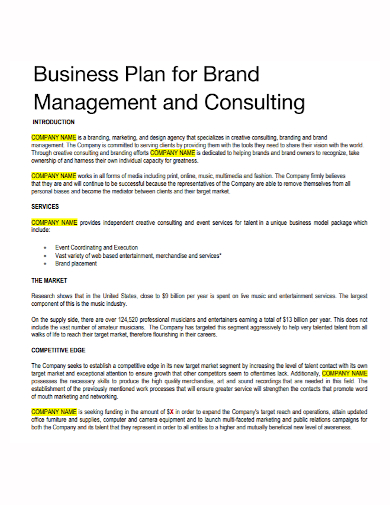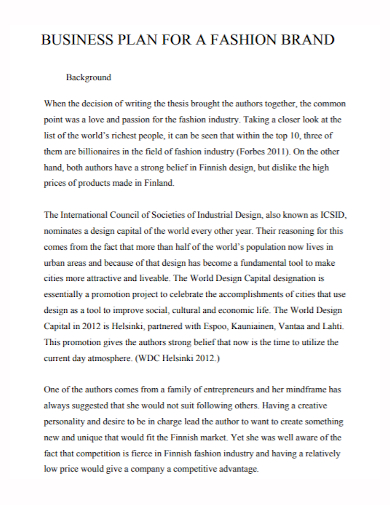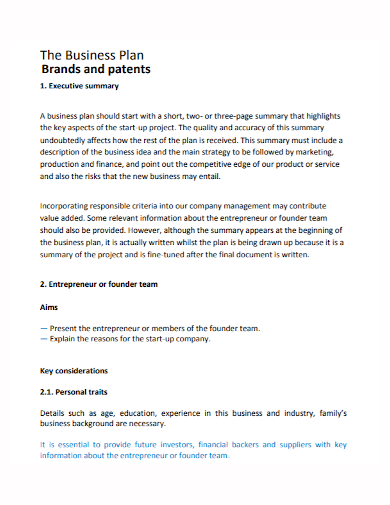The term “branding” refers to the process of identifying your company. It’s how your customers recognize and interact with your company. A successful brand is more than simply a logo; it’s represented in everything from customer service, employee attire, business cards, and location to marketing materials and advertising. Your brand should reflect what your company stands for and what sets it apart from the competition; it should express your company’s qualities, strengths, and personality.
In order to build a successful brand, you must conduct extensive market research to determine why buyers should be drawn to your company. Customers will remember your business if you have a strong brand, and they will be more confident that your products or services will meet their demands. Customers are more likely to stick with a brand they know and trust. Branding should be addressed early on in the process of creating a firm, as having a strong brand will increase your chances of success.
6+ Brand Business Plan Samples
1. Brand Business Plan Template
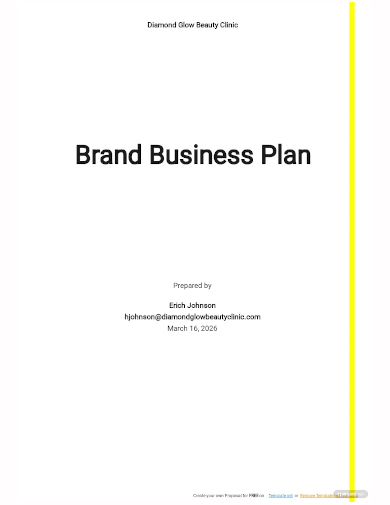
2. Online Clothing Brand Business Plan Template
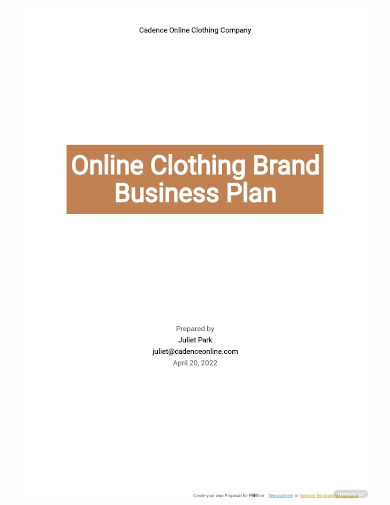
3. Brand Management Business Plan
4. Fashion Brand Business Plan
5. Brand Strategy Business Plan
6. Sample Brand Business Plan
7. Brand and Patents Business Plan
A brand is an entire ecosystem that governs how you interact with the outside world. In a sense, your brand is a promise to your customers about how you will conduct business. Because the style, colors, and phrases you use should represent the emotions your customers will have when they use your product, this promise affects how you develop your website, produce your business card, and even respond to messages and reviews.
How to Plan a Brand for Your Business
Building a brand may be a simple process if the creative aspects are broken down into a few easy phases. Don’t worry if you find yourself going back over steps; it’s all part of the process of creating a brand identity. You can make a selection only to discover later that it clashes with other design aspects in your company.
- Analyze your competitors and audience – What is the demographic of your intended audience? What makes your product or service superior to others? What are you capable of that no one else can? Attempting to answer these questions will assist you in determining what will resonate with your target clients as well as how other organizations in the market portray themselves. This might help you determine the direction of your branding initiatives right away. It will either assist in the elimination of possibilities that are already taken or do not resonate with clients. Alternatively, it will emphasize imagery, tone, content, and graphics that are most appealing to your ideal customer. In either instance, it just helps you think more critically about your brand’s aesthetic and communication features.
- Define your brand – Your goods and services will not appeal to everyone. By being particular, your brand should reflect this. By having a distinct focus and a persona that your target market can relate to. When establishing your value proposition and mission statement, you’ve probably already gone through part of this.
- Choose your name – Your competition analysis and brand-defining tasks have already provided you with some choices for a name for your company. As previously stated, branding is much more than just your name and logo, yet your name does carry some weight. It’s the word or phrase that connects all of your other brand pieces, but it’s not what gives your brand personality.
- Select brand colors – After you’ve decided on a name, you’ll need to visually establish your brand. For customers, this is frequently the most emotive aspect, and it affects purchase psychology.
- Write a slogan or tagline – Your value proposition is very similar to your tagline or slogan. It’s a one-sentence slogan that’ll appear under your logo, in advertising, on social bios, and everywhere else it feels appropriate. Short and memorable slogans are ideal. It should also include a modest call to action for your customers, if possible.
- Collect brand images – Photography has the power to pique the interest—and wallets—of potential clients. The impact of well-chosen images with a consistent theme on how your brand is regarded is significant.
- Create a logo for your business – This is frequently the first thought, although it should be addressed somewhere in the middle of the design process. It’s all too simple to create a visually appealing image that has nothing to do with your brand’s fundamental message.
- Know the branding assets that you need – It’s time to figure out what kind of brand assets you’ll need for your company. This goes beyond simply establishing fundamental elements and really assists you in creating a list of precise images to which your brand will need to adapt.
- Establish your brand guidelines – This will address the fundamentals of your brand as well as how it should be presented across various platforms. Most likely, you won’t have every scenario covered at first, but this will provide you with a source of truth to refer to when creating new pictures.
FAQs
What is brand development?
The process of building and strengthening your professional services brand is known as brand development. We divide the process into three phases when assisting businesses with brand development. The first step is to ensure that your brand strategy is correct and linked with your business goals. The second step is to create all of the tools you’ll need to communicate your brand, including a logo, tagline, and website. Finally, you’ll need to enhance your newly created or revised brand.
Why is it important to research your target clients?
Understanding your target client’s perspectives and priorities, anticipating their wants, and putting your message in language that connects with them can all be aided by research. It also reveals how people perceive your company’s capabilities and present brand. As a result, the marketing risk associated with brand development is significantly reduced.
If you want to see more samples and formats, check out some brand business plan samples and templates provided in the article for your reference.
Related Posts
FREE 10+ Co-Branding Agreement Samples
FREE 10+ Advertising Agency Business Plan Templates
FREE 10+ Start-Up Business Plan Samples
FREE 10+ Annual Marketing Plan Samples
FREE 10+ Food Catering Business Plan Samples
FREE 9+ Catering Marketing Plan Samples
FREE 9+ Fashion Company Profile Samples
FREE 6+ Sample Branding Strategy
FREE 5+ Brand Risk Management Samples
Things Every Manager Should Know about Marketing
FREE 24+ Strategic Plan Templates
FREE 22+ Sample Strategic Plan
FREE 18+ Sample Business Plan
FREE 15+ Sales and Marketing Plan Samples
FREE 13+ Sample Daycare Business Plan

